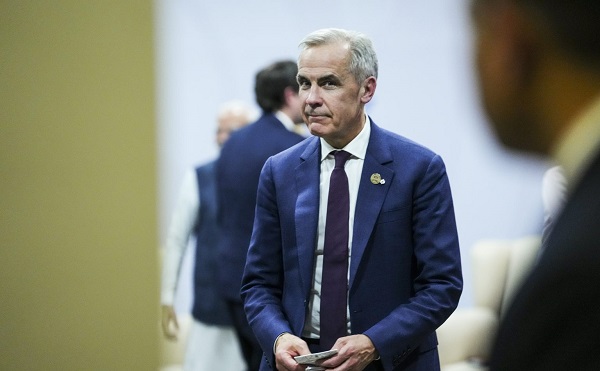Economy
Refuting the ancient myth of overpopulation

From LifeSiteNews
By Aidan Grogan
Recent findings decimate the Malthusian outlook and render advocacy of population control not only ill-informed and inexcusable, but frankly anti-human.
(American Institute for Economic Research) — Prince Philip once said, “In the event that I am reincarnated, I would like to return as a deadly virus, to contribute something to solving overpopulation.” The late Duke of Edinburgh passed away in 2021, but the hysterical sentiment he expressed about overpopulation lives on.
A YouGov poll found that overpopulation concerns are widespread among adults across the planet, with nearly half of sampled Americans believing that the world’s population is too high. This view is shared by 76 percent of Hungarians and 69 percent of Indians, according to the poll.
Overpopulation and ecological disasters have been the themes of numerous blockbuster movies, including ZPD (1972), Soylent Green (1973), Idiocracy (2006), and Elysium (2013). Mainstream news outlets have repeatedly promoted the apocalyptic idea to the public, with headlines such as “Science proves kids are bad for Earth. Morality suggests we stop having them” (NBC News). The progressive magazine Fast Company released a video titled “Why having kids is the worst thing you can do for the planet.”
The theory of overpopulation, and the collectivist idea that human reproduction must be limited, even by force, is nothing new. It first appeared in the ancient Mesopotamian Atrahasis epic, where the gods control the human population by infertility, infanticide, and appointing a priest class to limit childbirth.
Plato and Aristotle both endorsed a form of proto-eugenics and population control. In The Republic, Socrates and Glaucon conclude that an owner controlling the breeding of his dogs and birds to prevent their degeneration should also apply to the human species. The guardians would be tasked with deciding who is allowed to reproduce and who should be prohibited from having offspring. In the Politics, Aristotle advocated for state-mandated abortions of children with deformities or in cases where couples are having too many children and contributing to overpopulation.
The decline of Greek civilization in the second century BCE was not a consequence of an excess number of births, but precisely the opposite. Polybius attributed the downfall of Greece in his time to a decay of population which emptied out the cities and resulted in a failure of productiveness. It was not warfare and pestilence which reduced the birth rate, but decadence. The idle men of Greece, according to Polybius, were more interested in money and pleasure than marriage and child-rearing.
Two millennia later, English economist Thomas Malthus resurrected the old Mesopotamian myth with his 1798 An Essay on the Principle of Population. Malthus claimed that population growth increases geometrically while food production increases only arithmetically, which he believed would lead to widespread famine if the rapid propagation of humanity were not obstructed.
He identified two checks, one natural and one human-induced, which could keep population growth limited: preventive checks, such as delayed marriage or sexual abstinence, that stabilize the birth rate and evade the natural calamities of positive checks – famines, pestilences, earthquakes, floods, etc. – which represent nature’s striking back against the pressures of unhindered population growth.
Malthus preferred the former, but if unsuccessful, supported appalling and brutal depopulation measures. He suggested policies to “make the streets narrower, crowd more people into the houses, and court the return of the plague.” He also recommended banning “specific remedies for ravaging diseases.”
In 1859, Charles Darwin’s On the Origin of Species argued that species evolved gradually from a common ancestor. His follow-up The Descent of Man posited that humans descended from their ape-like past through a process of sexual selection that favored the stronger, more intelligent genes. Darwin said that his evolutionary theory “is the doctrine of Malthus applied with manifold force to the whole animal and vegetable kingdoms.”
READ: U.S. birth rate hit record low last year, signaling surge in childlessness
Darwin’s cousin, Francis Galton, used Darwin’s theory of evolution to develop eugenics – a pseudo-scientific theory that the human race could be improved through controlled breeding.
Subsidized by some of the largest philanthropic organizations in the United States, including the Rockefeller Foundation and the Carnegie Institution, eugenics was embraced by many leaders of the American progressive movement, who favored involuntary sterilization and immigration restriction.
Margaret Sanger, the founder of the American Birth Control League – later to be renamed Planned Parenthood – denigrated charity and referred to the poor as “human waste.” She and her companions considered several names for their movement, such as “neo-Malthusianism,” “population control,” and “race control,” before finally settling on “birth control.”
The eugenicists’ fervent collectivism and disregard for America’s founding principles affirming the inherent dignity and rights of every individual were best expressed through Madison Grant’s The Passing of the Great Race, in which he wrote:
Mistaken regard for what are believed to be divine laws and a sentimental belief in the sanctity of human life tend to prevent both the elimination of defective infants and the sterilization of such adults as are themselves of no value to the community. The laws of nature require the obliteration of the unfit and human life is valuable only when it is of use to the community or race.
Eugenics laws were implemented across the United States beginning with Indiana in 1907. By the Second World War, around 60,000 Americans had undergone sterilization.
In Britain, eugenics was enthusiastically championed by socialists such as John Maynard Keynes, George Bernard Shaw, and H.G. Wells. Keynes wrote an outline for a book called Prolegomena to a New Socialism, in which he listed “eugenics, population” as “chief preoccupations of the state.”
Eugenics – at least under that official title – began to fade after the harsh realities of the Holocaust were unveiled, but the Malthusian presuppositions which undergirded their movement never vanished.
Stanford biologist Paul R. Ehrlich’s 1968 book The Population Bomb re-invigorated the Malthusian craze for a new generation, predicting imminent worldwide famines and other catastrophes due to overpopulation. In the prologue, he wrote: “We can no longer afford merely to treat the symptom of the cancer of population growth; the cancer itself must be cut out. Population control is the only answer.”
That same year, a group of European scientists concerned about the future of the planet founded an NGO called the Club of Rome. Their first major publication, Limits to Growth (1972), attacked the pursuit of material gain and continuous economic expansion. Two of the Club of Rome’s most prominent members openly declared in their 1991 book The First Global Revolution that humanity is the real enemy:
In searching for a common enemy against whom we can unite, we came up with the idea that pollution, the threat of global warming, water shortages, famine and the like, would fit the bill… All these dangers are caused by human intervention in natural processes, and it is only through changed attitudes and behaviour that they can be overcome. The real enemy then is humanity itself.
At the time of the publication of Ehrlich’s doomsday book and the Club of Rome’s founding, the world’s population stood at 3.6 billion, and nearly half of people worldwide were living in poverty. Over the next five decades, the global population more than doubled to 7.7 billion, yet fewer than 9 percent of people remain in poverty today, and famines have virtually disappeared.
Ehrlich’s hypothesis was rejected by economist Julian Simon in his 1981 book The Ultimate Resource, in which he argued that a rising number of “skilled, spirited, and hopeful people” results in more ingenuity, less scarcity, and lower costs in the long run. In other words, the larger the human population, the greater the collective brain power our species may wield to innovate, overcome problems, and benefit everyone through increased abundance. The ultimate resource, according to Simon, is people.
Recent research from Gale L. Pooley and Marian L. Tupy has vindicated Simon’s optimistic view. For every one-percent increase in population, commodity prices tend to fall by around one percent. In the years 1980-2017, the planet’s resources became 380 percent more abundant.
These findings decimate the Malthusian outlook and render advocacy of population control not only ill-informed and inexcusable, but frankly anti-human. The ecological cataclysms predicted by Ehrlich and the Club of Rome haven’t come true. Nature hasn’t struck back against a rapidly increasing population in any manner anticipated by Malthus.
As former U.S. Department of Energy undersecretary for science Steven E. Koonin pointed out in his 2021 book Unsettled, U.N. and U.S. government climate data show the following: 1) humans have had no detectable impact on hurricanes over the past century, 2) Greenland’s ice sheet isn’t shrinking any more rapidly today than it was 80 years ago, and 3) the net economic impact of human-induced climate change will be minimal through at least the end of this century.
Pooley and Tupy, however, caution that population growth alone is not enough to generate what they term “superabundance,” as they titled their recent book. The innovation required to sustain an ever-increasing world population demands economic and personal freedom. Collectivism and central planning will only restrict the human ingenuity, ideas, and enterprises that will pave the way toward a brighter, more prosperous future.
It is certainly time to lay to rest Malthusian theory and the overpopulation hysteria it has aroused. We must avoid the cynical outlook on humanity which regards us as net destroyers, a viral pathogen ravaging the earth, and instead opt for the more positive – and true – vision of human beings and human destiny. We are net creators.
Reprinted with permission from the American Institute for Economic Research.
Business
Canadians love Nordic-style social programs as long as someone else pays for them

This article supplied by Troy Media.
 By Pat Murphy
By Pat Murphy
Generous social programs come with trade-offs. Pretending otherwise is political fiction
Nordic societies fund their own benefits through taxes and cost-sharing. Canadians expect someone to foot the bill
Like Donald Trump, one of my favourite words starts with the letter “T.” But where Trump likes the word “tariff,” my choice is “trade-off.” Virtually everything in life is a trade-off, and we’d all be much better off if we instinctively understood that.
Think about it.
If you yield to the immediate pleasure of spending all your money on whatever catches your fancy, you’ll wind up broke. If you regularly enjoy drinking to excess, be prepared to pay the unpleasant price of hangovers and maybe worse. If you don’t bother to acquire some marketable skill or credential, don’t be surprised if your employment prospects are limited. If you succumb to the allure of fooling around, you may well lose your marriage. And so on.
Failing to understand trade-offs also extends into political life. Take, for instance, the current fashion for anti-capitalist democratic socialism. Pushed to explain their vision, proponents will often make reference to the Nordic countries. But they exhibit little or no understanding of how these societies actually work.
As American economist Deirdre Nansen McCloskey notes, “Sweden is pretty much as ‘capitalistic’ as is the United States. If ‘socialism’ means government ownership of the means of production, which is the classic definition, Sweden never qualified.” The central planning/government ownership model isn’t the Swedish way.
What the Nordics do have, however, is a robust social safety net. And it’s useful to look at how they pay for it.
J.P. Morgan’s Michael Cembalest is a man who knows his way around data. He puts it this way: “Copy the Nordic model if you like, but understand that it entails a lot of capitalism and pro-business policies, a lot of taxation on middle-class spending and wages, minimal reliance on corporate taxation and plenty of co-pays and deductibles in its health care system.”
For instance, take the kind of taxes that are often derided as undesirably regressive—sales taxes, social security taxes and payroll taxes. In Sweden, they account for a whopping 27 per cent of gross domestic product. And some 15 per cent of health expenditures are out of pocket.
Charles Lane—formerly with the Washington Post, now with The Free Press—is another who pulls no punches: “Nordic countries are generous, but they are not stupid. They understand there is no such thing as ‘free’ health care, and that requiring patients to have at least some skin in the game, in the form of cost-sharing, helps contain costs.”
In effect, Nordic societies have made an internal bargain. Ordinary people are prepared to fork over large chunks of their own money in return for a comprehensive social safety net. They’re not expecting the good stuff to come to them without a personal cost.
Scandinavians obviously understand the concept of trade-offs, a dimension that seems to be absent from much of the North American discussion. Instead of Nordic-style pragmatism, spending ideas on this side of the Atlantic are floated on the premise of having someone else pay. And the electorally prized middle class is to be protected at all costs.
In the aftermath of Zohran Mamdami’s New York City win, journalist Kevin Williamson had a sobering reality check: “Class warfare isn’t how they roll in Scandinavia. Oslo is a terrific place to be a billionaire—Copenhagen and Stockholm, too … what’s radically different about the Scandinavians is not how they tax the very high-income but how they tax the middle.”
Taxation propensities aside, Nordic societies are different from the United States and Canada.
Denmark, for instance, is very much a “high-trust” society, defined as a place “where interpersonal trust is relatively high and ethical values are strongly shared.” It’s often been said that it works the way it does because it’s full of Danes, which is broadly true—albeit less so than it was 40 years ago.
Denmark, though, has no interest in multiculturalism as we’ve come to know it. Although governed from the centre-left, there’s no state-sponsored focus on systemic discrimination or diversity representation. Instead, the emphasis is on social cohesion and conformity. If you want to create a society like Denmark, it helps to understand the dynamics that make it work.
Reality intrudes on all sorts of other issues. For example, there’s the way in which public discourse is disfigured on the question of climate change and the need to pursue aggressive net-zero policies.
Asked in the abstract, people are generally favourable, which is then touted as evidence of strong public support. But when subsequently asked how much they’re personally prepared to pay to accomplish these ambitious goals, the answer is often little or nothing.
If there’s one maxim we should be taught from childhood, it’s this: there are no panaceas, only trade-offs.
Troy Media columnist Pat Murphy casts a history buff’s eye at the goings-on in our world. Never cynical – well, perhaps a little bit.
Troy Media empowers Canadian community news outlets by providing independent, insightful analysis and commentary. Our mission is to support local media in helping Canadians stay informed and engaged by delivering reliable content that strengthens community connections and deepens understanding across the country.
Business
Higher carbon taxes in pipeline MOU are a bad deal for taxpayers

The Canadian Taxpayers Federation is criticizing the Memorandum of Understanding between the federal and Alberta governments for including higher carbon taxes.
“Hidden carbon taxes will make it harder for Canadian businesses to compete and will push Canadian entrepreneurs to shift production south of the border,” said Franco Terrazzano, CTF Federal Director. “Politicians should not be forcing carbon taxes on Canadians with the hope that maybe one day we will get a major project built.
“Politicians should be scrapping all carbon taxes.”
The federal and Alberta governments released a memorandum of understanding. It includes an agreement that the industrial carbon tax “will ramp up to a minimum effective credit price of $130/tonne.”
“It means more than a six times increase in the industrial price on carbon,” Prime Minister Mark Carney said while speaking to the press today.
Carney previously said that by “changing the carbon tax … We are making the large companies pay for everybody.”
A Leger poll shows 70 per cent of Canadians believe businesses pass most or some of the cost of the industrial carbon tax on to consumers. Meanwhile, just nine per cent believe businesses pay most of the cost.
“It doesn’t matter what politicians label their carbon taxes, all carbon taxes make life more expensive and don’t work,” Terrazzano said. “Carbon taxes on refineries make gas more expensive, carbon taxes on utilities make home heating more expensive and carbon taxes on fertilizer plants increase costs for farmers and that makes groceries more expensive.
“The hidden carbon tax on business is the worst of all worlds: Higher prices and fewer Canadian jobs.”
-

 Alberta2 days ago
Alberta2 days agoNet Zero goal is a fundamental flaw in the Ottawa-Alberta MOU
-

 Food2 days ago
Food2 days agoCanada Still Serves Up Food Dyes The FDA Has Banned
-

 COVID-192 days ago
COVID-192 days agoThe dangers of mRNA vaccines explained by Dr. John Campbell
-

 Addictions2 days ago
Addictions2 days agoManitoba Is Doubling Down On A Failed Drug Policy
-

 Alberta2 days ago
Alberta2 days agoKeynote address of Premier Danielle Smith at 2025 UCP AGM
-

 Artificial Intelligence1 day ago
Artificial Intelligence1 day ago‘Trouble in Toyland’ report sounds alarm on AI toys
-

 COVID-192 days ago
COVID-192 days agoFDA says COVID shots ‘killed’ at least 10 children, promises new vaccine safeguards
-

 National20 hours ago
National20 hours agoMedia bound to pay the price for selling their freedom to (selectively) offend










